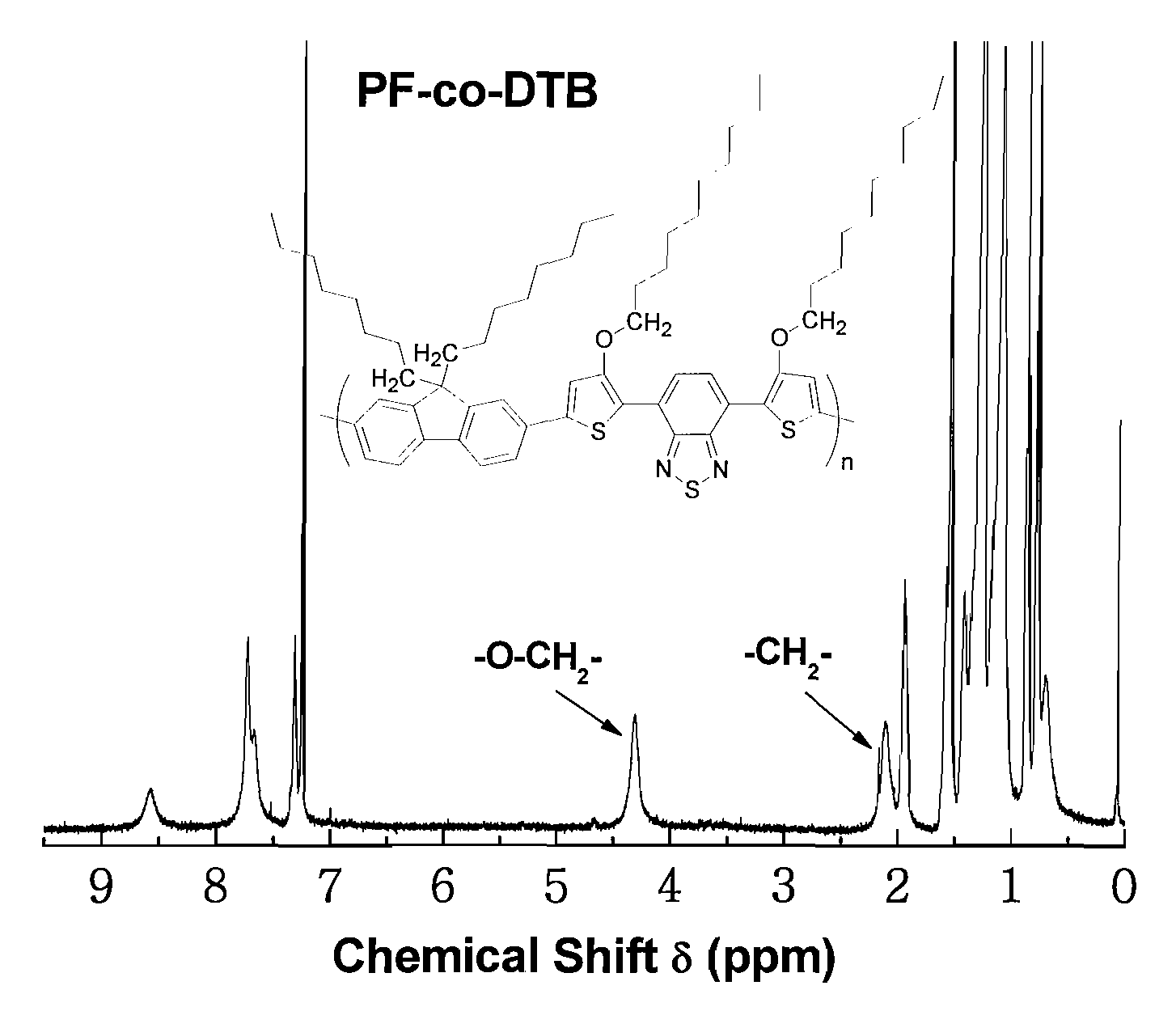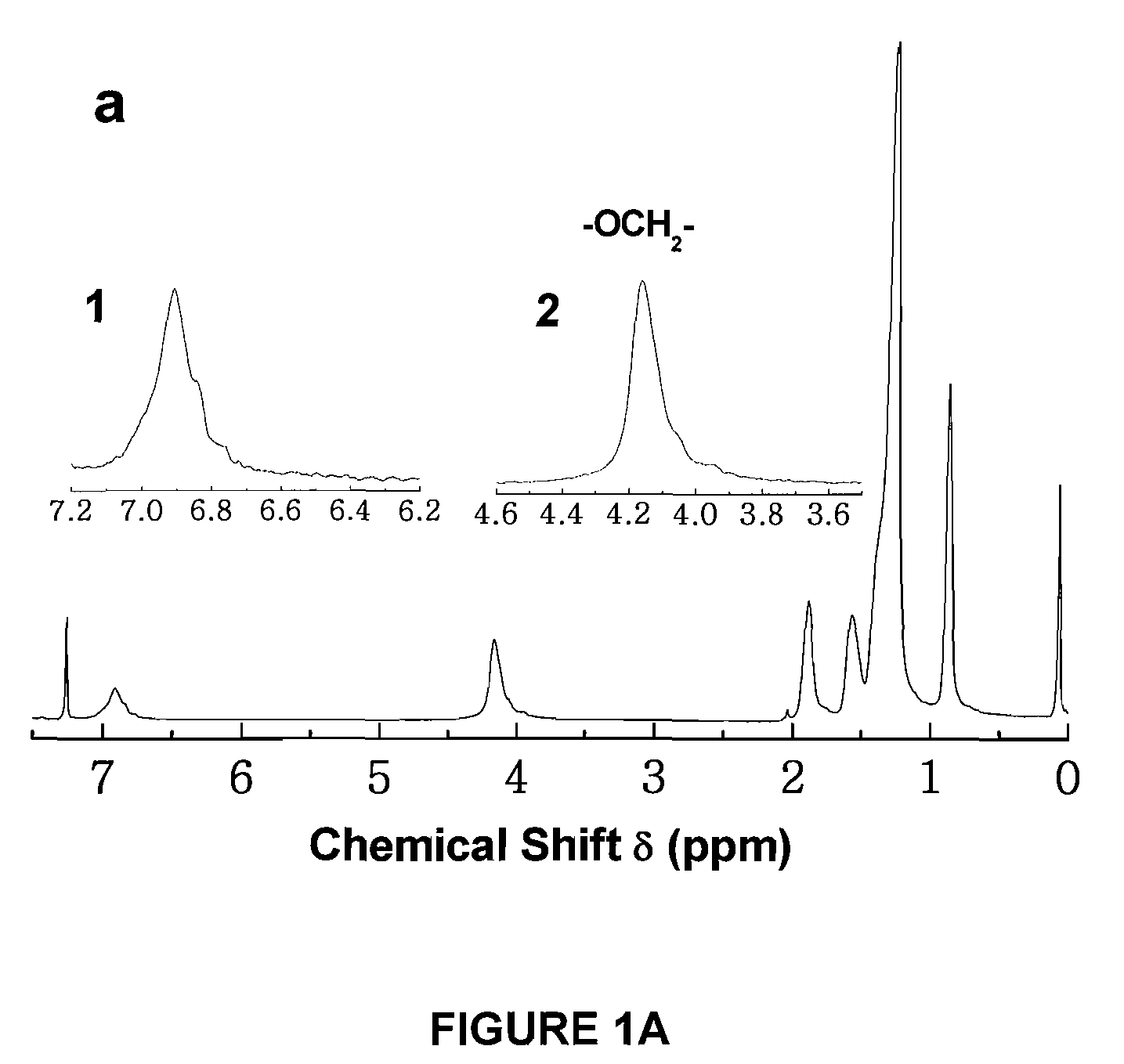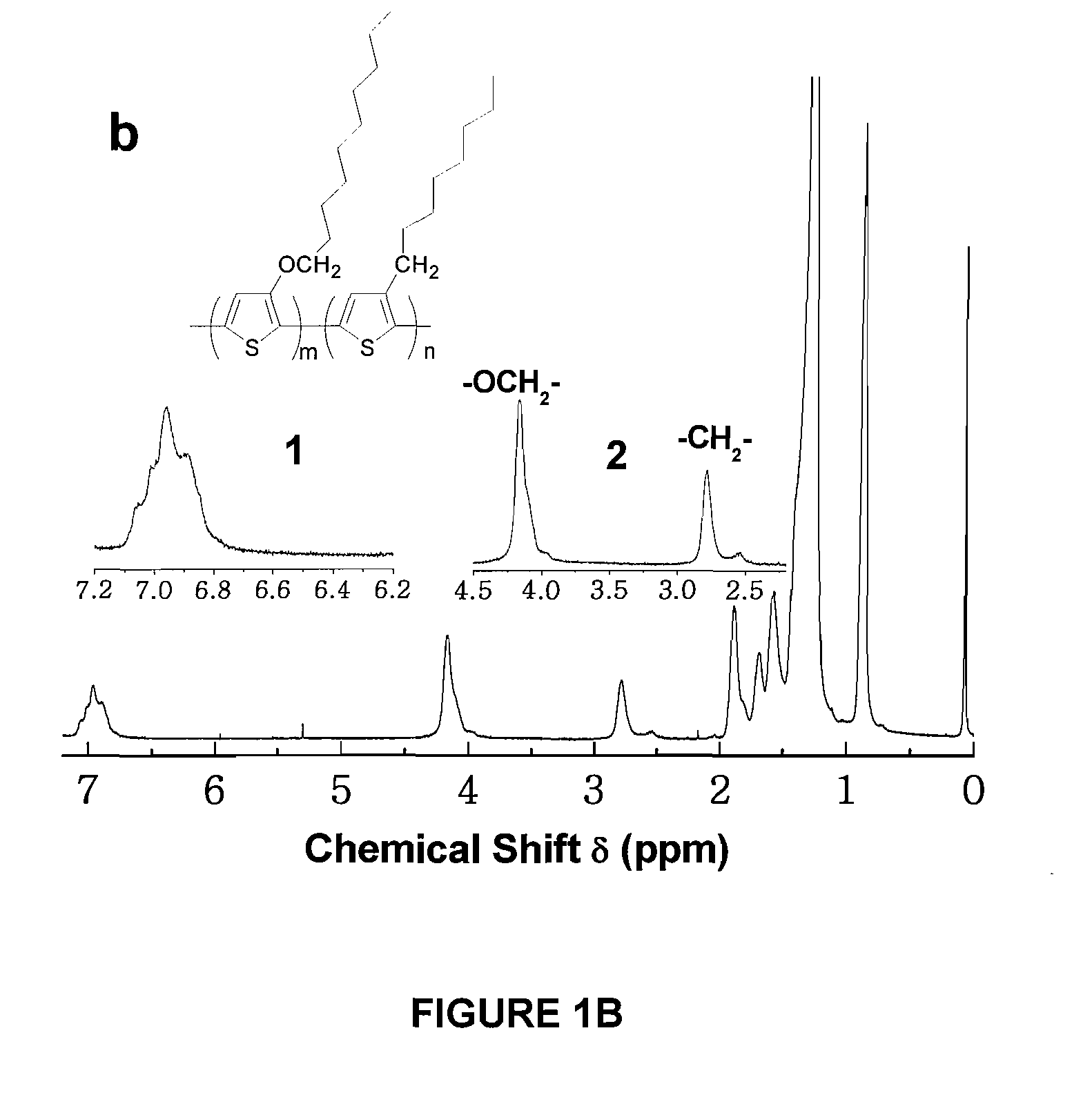Copolymers of alkoxythiophene
a technology of alkoxythiophene and copolymer, applied in the field of synthesis of alkoxythiophene copolymer, can solve the problems of insufficient uniformity and environmental stability of thin films of p3dot, and achieve the effects of enhancing charge transfer, high-efficiency polymer solar cells, and reducing the band gap of copolymers
- Summary
- Abstract
- Description
- Claims
- Application Information
AI Technical Summary
Benefits of technology
Problems solved by technology
Method used
Image
Examples
Embodiment Construction
[0049]Referring more specifically to the drawings, for illustrative purposes the present invention is embodied in the apparatus generally shown in FIG. 1A through FIG. 7. It will be appreciated that the apparatus may vary as to configuration and as to details of the parts, and that the method may vary as to the specific steps and sequence, without departing from the basic concepts as disclosed herein.
1. EXPERIMENT
1.1. Measurement and Characterization
[0050]1H and 13C NMR spectra were recorded on Varian Inova 500 or Bruker DRX 400 in deuterated chloroform solution. Number-average (Mn) and weight-average (Mw) molecular weights were determined by a gel permeation chromatography (GPC) using a Varian Prostar Solvent Dilvery Module 230, UV-Vis detector 340. Samples were filtered through a 0.2 μm PTFE filter membrane prior to injection. Three 300 mm Waters Stryragel HR columns were calibrated with polystyrene standards using THF as the eluent with a flow rate of 1.0 mL / min. The elemental an...
PUM
| Property | Measurement | Unit |
|---|---|---|
| volume concentrations | aaaaa | aaaaa |
| concentrations | aaaaa | aaaaa |
| open-circuit voltage | aaaaa | aaaaa |
Abstract
Description
Claims
Application Information
 Login to View More
Login to View More - R&D
- Intellectual Property
- Life Sciences
- Materials
- Tech Scout
- Unparalleled Data Quality
- Higher Quality Content
- 60% Fewer Hallucinations
Browse by: Latest US Patents, China's latest patents, Technical Efficacy Thesaurus, Application Domain, Technology Topic, Popular Technical Reports.
© 2025 PatSnap. All rights reserved.Legal|Privacy policy|Modern Slavery Act Transparency Statement|Sitemap|About US| Contact US: help@patsnap.com



